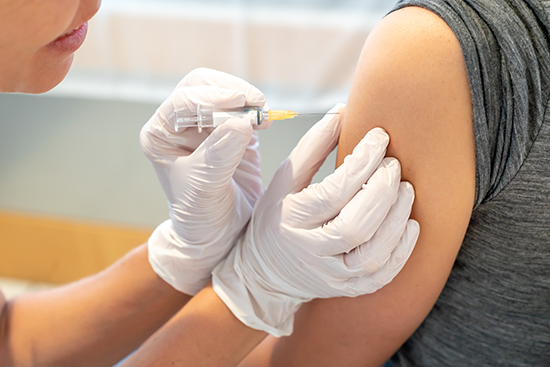There finally seems to be light at the end of the dark tunnel that is the corona pandemic. The Netherlands commenced vaccinating its citizens in the beginning of January this year. As expected, and as it should be, the first priority has been given to the healthcare workers and, within that category, the people who were directly involved in caring for COVID patients.
By the third week of February over a million people were vaccinated in the Netherlands and by mid-March, the number is expected to have doubled. For now, the focus is on care workers, the elderly (with the first priority being mobile residents from 65 years of age and then non-mobile people in the same age group), as well as vulnerable people, including residents of nursing homes and people with intellectual disability and mental health problems, living in care facilities. However, from this month onwards, anyone between the age group of 18-60 with an underlying health issue such as diabetes, heart problems, kidney problems or immune disorders can also expect to get their invitation. As for the rest of us, we will have to wait till May for our invitation to the corona vaccination party.
An interesting fact to be considered is that not the same vaccine is given to everyone. The Netherlands is currently using three different types of corona vaccine approved by the European Union. There is Comirnaty developed by Pfizer/BioNTech which requires two doses; the second injection is delivered three weeks after the first one. This provides the maximum protection (94.7%) against the corona virus, from seven days after receiving the second dose. Then there is the Moderna vaccine, also consisting of two injections with a gap of twenty-eight days between the two doses. This gives 94.1% protection, fourteen days after receiving the second shot. The third, the one that most of us are likely to receive, is AstraZeneca. Two doses are required with this vaccine as well. It’s a bit easier to handle logistically, as the second dose can be delivered anytime between 4 to 12 weeks after the first. On the other hand, it only offers 60% efficacy.
The Comirnaty and Moderna vaccines are reserved for the most vulnerable groups: people who work directly with COVID-19 patients, general practitioners and the elderly, as seems only logical. With the variety of vaccines available, one might think people should be able to choose which vaccine they will receive, but this is not the case. The vaccines have a limited supply and have been carefully assigned to various groups, with the most vulnerable people receiving the vaccines with the highest efficacy.
As common with most vaccinations, people may experience side effects such as fatigue, headache, fever, cold shivers, muscle ache, redness and soreness at the site of injection. However, these symptoms should be mild and disappear in a few days.
Before you start celebrating and congratulating those who are vaccinated, it will be wise to remember that none of these vaccines provides 100% immunity against the corona virus and even less to any mutated strains. Nevertheless, with more and more people fully vaccinated, the government will be able to relax some of the current corona rules and regulations, but there will still be a need for caution as long as herd immunity is not reached.
The thought of spending another Dutch spring and possibly summer indoors with a curfew, unable to visits our favorite shops, restaurants and theme parks, or plan any vacations, might seem daunting. Some may curse the slow pace of the vaccination process. Still, we might want to see the glass half full: a steady pace is more prudent when delivering a new vaccine, with limited supply and research to back it, to the mass population.
As much as we are tired of hearing it, we need to be just a little more patient, and hold on just a little longer. If things go as planned, we still might be able to enjoy the late summer and the Dutch landscape is equally stunning in the fall. With all of us being a little considerate of our collective health, we will soon be able to return to life as we knew it.
Written by Priyanka Sharma
